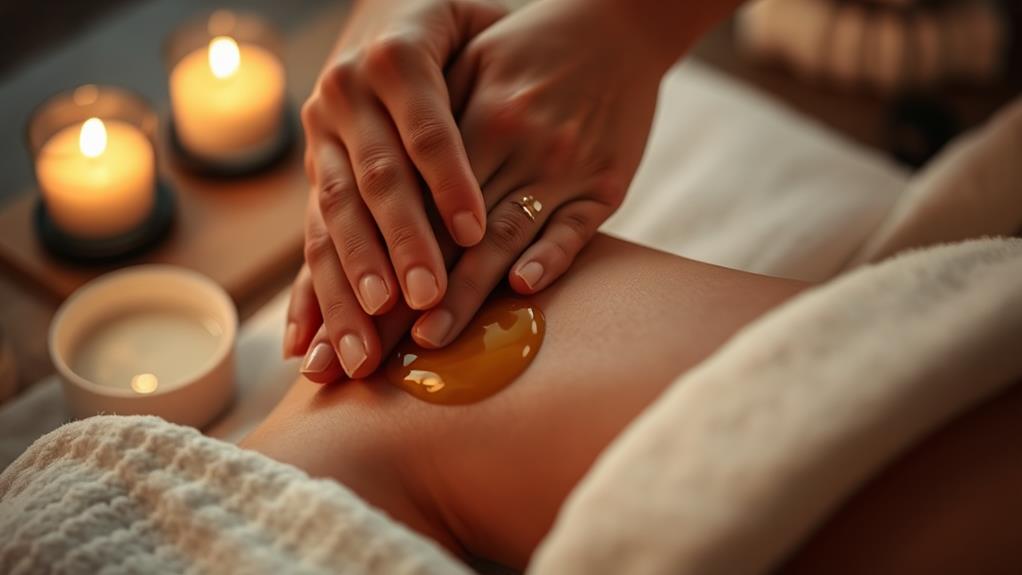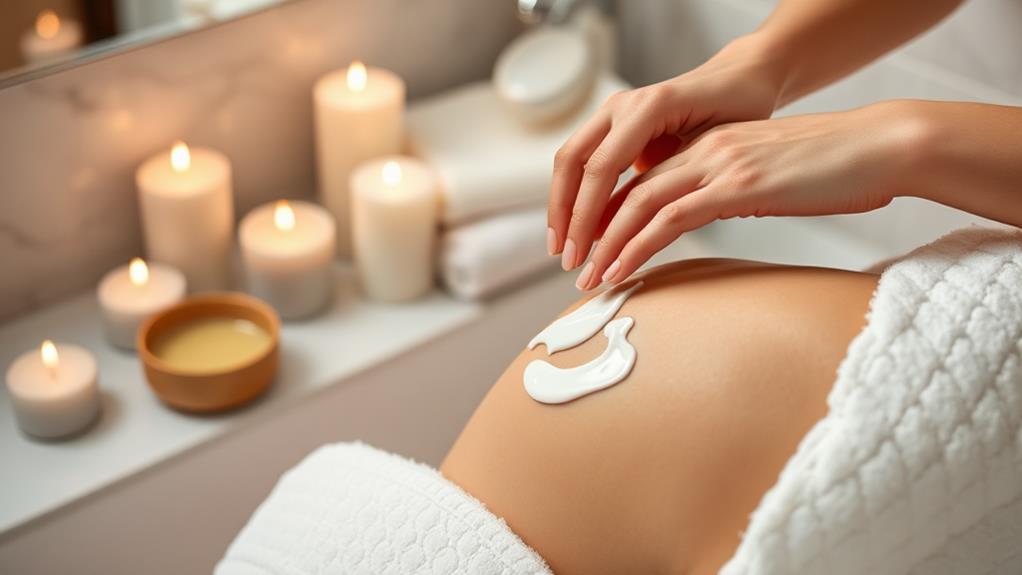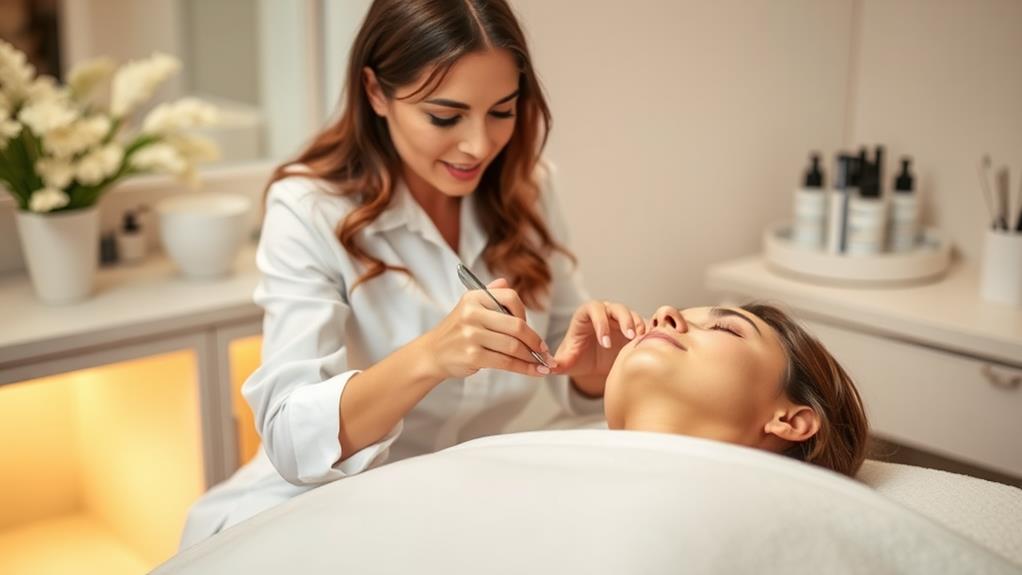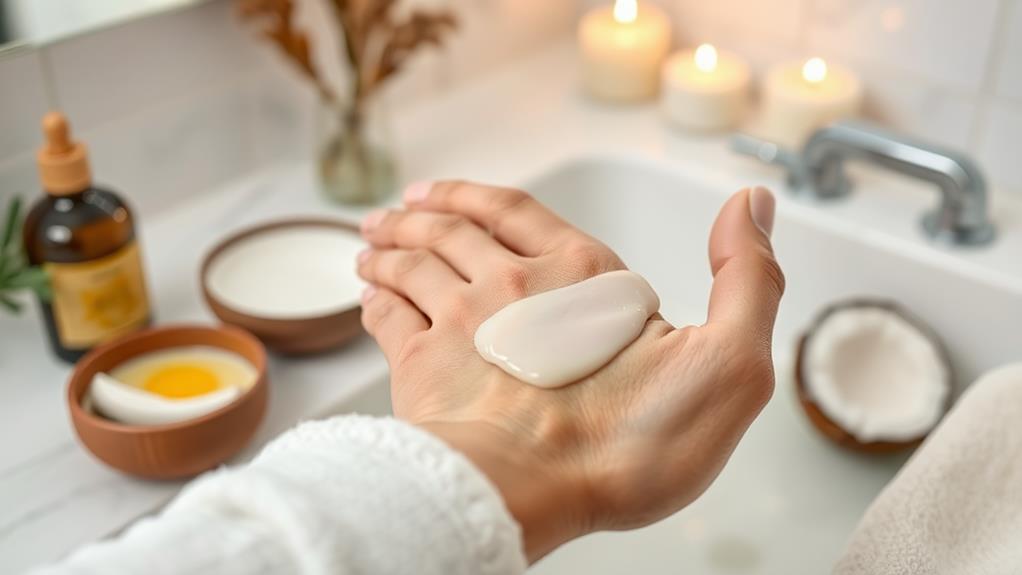When you find yourself with stubborn wax on your skin, it can be frustrating. Fortunately, there are seven straightforward solutions that can help you tackle this issue effectively. You'll start by softening the wax, which sets the stage for easier removal. Then, you'll explore scraping techniques and natural oils that can further assist in getting rid of any residue. But what if those methods don't work? The next steps may surprise you, offering alternatives you might not have considered before.
Softening the Wax

When it comes to removing wax, softening it first can make a world of difference. You'll find that taking a few simple steps to soften the earwax can make it easier to remove earwax and keep your ears healthy.
One effective method is to use natural oils like mineral oil or olive oil. Just a few drops can help break down earwax build-up, making it less stubborn.
You can also try warm water mixed with glycerin—this combination works wonders in softening earwax as well. If you prefer over-the-counter solutions, look for ear drops with hydrogen peroxide or carbamide peroxide; they're specifically designed to soften earwax and are quite effective.
Another handy home remedy is a saline solution made from warm water and salt, which can loosen the wax, preparing it for removal.
By consistently applying these methods, you can help prevent earwax build-up, keeping your ears clear and comfortable.
Scraping Techniques
For effective wax removal, mastering scraping techniques can be incredibly beneficial. Start by using a flat-edged tool, like a spatula or even a credit card, to gently lift and scrape away the wax from your skin's surface.
It's important to wait until the wax has cooled and hardened slightly, as this makes it easier to remove without smearing or spreading. Always remember to scrape in one direction, using smooth and gentle motions to avoid skin irritation or injury.
Before you begin scraping, make sure your tool is clean to prevent any risk of infection. You might also consider applying a small amount of oil, such as mineral or olive oil, to help loosen the wax for easier removal. This tip can make a big difference in how smoothly the process goes!
After you've scraped away the wax, don't forget to cleanse the area with warm water and mild soap. This will help remove any residual wax and soothe your skin, minimizing the chance of irritation or redness.
Oil for Residue Removal

Often, using oil can be a game-changer for removing wax residue from your skin. Oils like olive oil, coconut oil, and mineral oil are fantastic options due to their emollient properties, which help dissolve the wax effortlessly.
To start, apply a few drops of warm oil directly onto the waxed area. The warmth is essential because it creates a comfortable temperature that can help soften the wax, making it much easier to wipe away.
Let the oil sit for a few minutes to maximize its effectiveness. This waiting time allows the oil to penetrate and break down the wax, ensuring a smoother removal process. Once you feel the wax has softened, you can gently wipe it off with a cloth or cotton pad.
Not only does using oil help remove the wax, but it also provides hydration to your skin. This is significant because it prevents dryness and irritation, leaving your skin feeling comfortable and nourished.
Washing the Area
Washing the area with warm water and mild soap can effectively help remove wax residue from your skin. Start by applying the warm water to the affected area, as it helps dissolve and loosen the wax, making it easier to wash away.
Use a soft cloth or sponge to gently scrub the area; this way, you avoid irritating your sensitive skin with abrasive materials.
After you've lathered up with soap, make sure to rinse thoroughly with clean water to remove all soap and wax residues. It's crucial to get everything off, so take your time.
Once rinsed, pat the area dry with a clean towel. Avoid rubbing it, as this might irritate your skin or push stubborn wax deeper into your pores.
If you still notice stubborn wax, don't worry! You can repeat the washing process. Alternatively, consider applying a gentle emollient to soften the wax before you wash it off again.
This extra step can make a big difference, ensuring your skin feels clean and comfortable. Remember, patience is key in achieving smooth results!
Moisturizing After Removal

Moisturizing your skin after wax removal is essential for restoring hydration and preventing irritation. Waxing can strip away your skin's natural oils, leading to dryness and discomfort. To combat this, it's important to moisturize with products that contain emollients, like Wheat Germ Oil, which can effectively soothe and hydrate your skin post-waxing.
Look for moisturizers rich in Vitamins A and E, as these vitamins can help calm redness and reduce swelling. They not only nourish your skin but also promote better skin texture, making it feel smooth and refreshed.
After waxing, it's recommended to wait at least 24 hours before applying heavy lotions or creams. This waiting period lets your skin recover and guarantees you don't aggravate any sensitivity.
Regularly moisturizing after hair removal can notably minimize the risk of post-waxing irritation or rashes. Your skin deserves some love and care, so don't skip this important step!
Using Commercial Products
After ensuring your skin is well-moisturized post-waxing, the next step is to contemplate using commercial wax removal products.
These products, like Clean + Easy Remove, are specially formulated with emollient-rich ingredients such as Wheat Germ Oil, making them effective in eliminating excess wax without irritating your skin. They not only focus on wax removal but also help to moisturize and hydrate, reducing any redness or irritation thanks to the added Vitamins A and E.
One of the best things about commercial wax removers is their versatility. Many of them can also be used for cleaning and disinfecting your waxing tools, making them a handy addition to your home or salon.
Users often find that these products work more efficiently than DIY methods, providing higher satisfaction with the results.
When choosing a commercial wax remover, make sure to opt for cruelty-free options, like those from Clean + Easy.
These brands take pride in their commitment to not testing on animals, so you can feel good about your choice while enjoying the convenience of effective wax removal.
Seeking Professional Help

When wax buildup lingers despite your best home remedies, it's time to seek professional help. Consulting a healthcare professional, like an audiologist or an ENT specialist, can make a big difference in your earwax removal journey.
These experts have the right tools and techniques to safely address stubborn earwax blockages, minimizing any risk of injury to your ear.
If you're experiencing severe pain, noticeable drainage, or sudden hearing loss, don't wait—seek medical advice immediately. These symptoms could signal more serious ear problems that need attention.
Professional removal methods, such as microsuction, are thorough and can provide relief when home treatments fall short.
Regular check-ups with a healthcare provider are also a smart move, especially for those prone to earwax buildup. Your healthcare professional can monitor your ears and recommend preventative measures, ensuring you stay on top of any potential issues.




